Sciatic Block
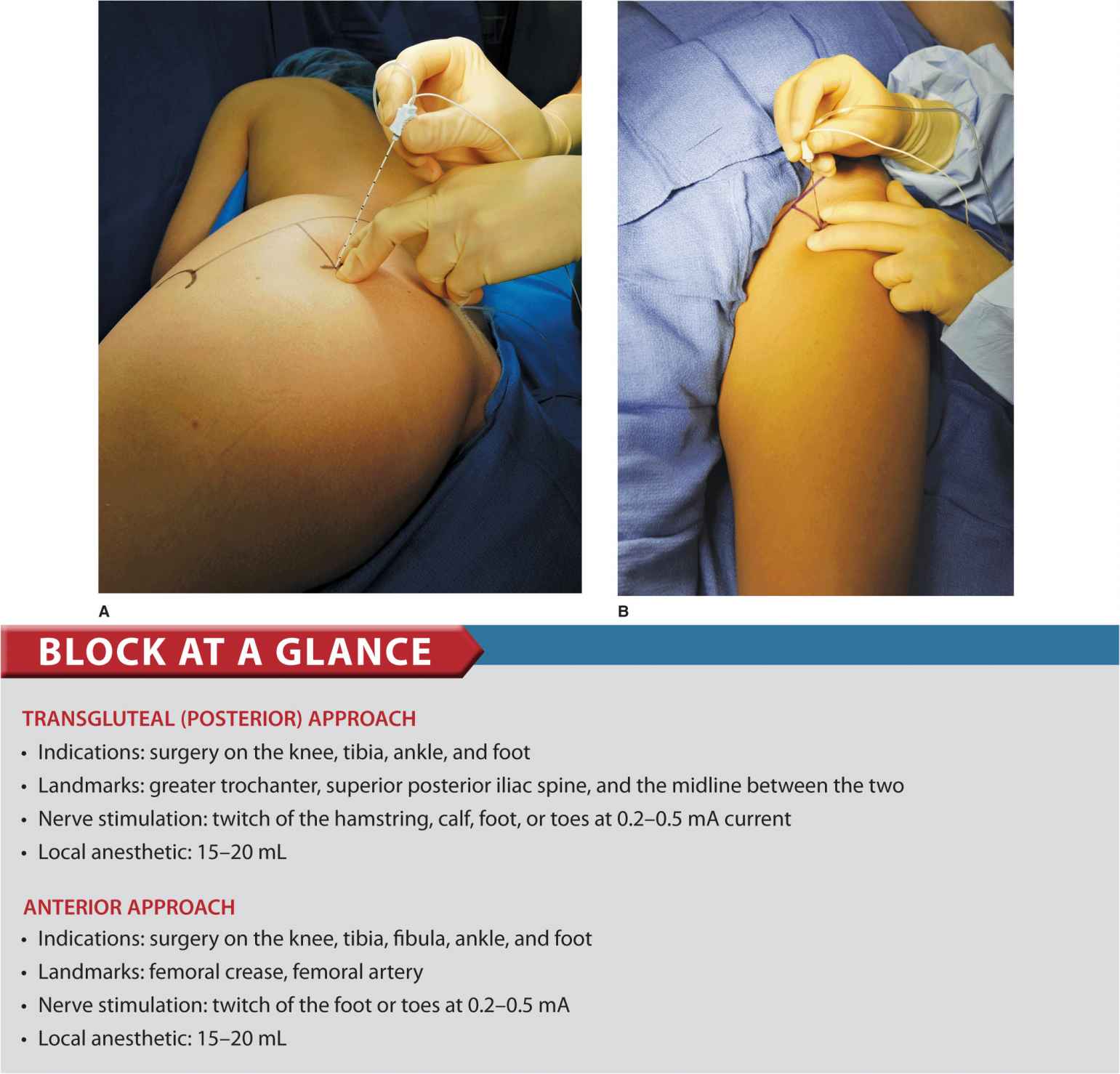
FIGURE 19.1-1. (A) Needle insertion for the transgluteal (posterior) approach to sciatic nerve block. (B) Needle insertion for anterior sciatic block.
PART 1: TRANSGLUTEAL APPROACH
General Considerations
The posterior approach to sciatic nerve block has wide clinical applicability for surgery and pain management of the lower extremity. Consequently, a sciatic block is one of the more commonly used techniques in our practice. In contrast to a common belief, this block is relatively easy to perform and associated with a high success rate. It is particularly well-suited for surgery on the knee, calf, Achilles tendon, ankle, and foot. It provides complete anesthesia of the leg below the knee with the exception of the medial strip of skin, which is innervated by the saphenous nerve. When combined with a femoral nerve or lumbar plexus block, anesthesia of the entire lower extremity can be achieved.
Functional Anatomy
The sciatic nerve is formed from the L4 through S3 roots. These roots form the sacral plexus on the anterior surface of the lateral sacrum and converge to become the sciatic nerve on the anterior surface of the piriformis muscle. The sciatic nerve is the largest nerve in the body and measures nearly 2 cm in breadth at its origin. The course of the nerve can be estimated by drawing a line on the back of the thigh beginning from the apex of the popliteal fossa to the midpoint of the line joining the ischial tuberosity to the apex of the greater trochanter. The sciatic nerve also gives off numerous articular (hip, knee) and muscular branches.
The sciatic nerve exits the pelvis through the greater sciatic foramen below the piriformis and descends between the greater trochanter of the femur and the ischial tuberosity, superficial to the external rotators of the hip (obturator internus, the gemelli muscles, and quadratus femoris) (Figures 19.1-2 and 19.1-3). On its medial side, the sciatic nerve is accompanied by the posterior cutaneous nerve of the thigh and the inferior gluteal artery. The articular branches of the sciatic nerve arise from the upper part of the nerve and supply the hip joint by perforating the posterior part of its capsule. Occasionally, these branches are derived directly from the sacral plexus. The muscular branches of the sciatic nerve are distributed to the biceps femoris, semitendinosus, and semimembranosus muscles, and to the ischial head of the adductor magnus. The two components of the nerve (tibial and common peroneal) diverge approximately 4 to 10 cm above the popliteal crease to separately continue their paths into the lower leg.
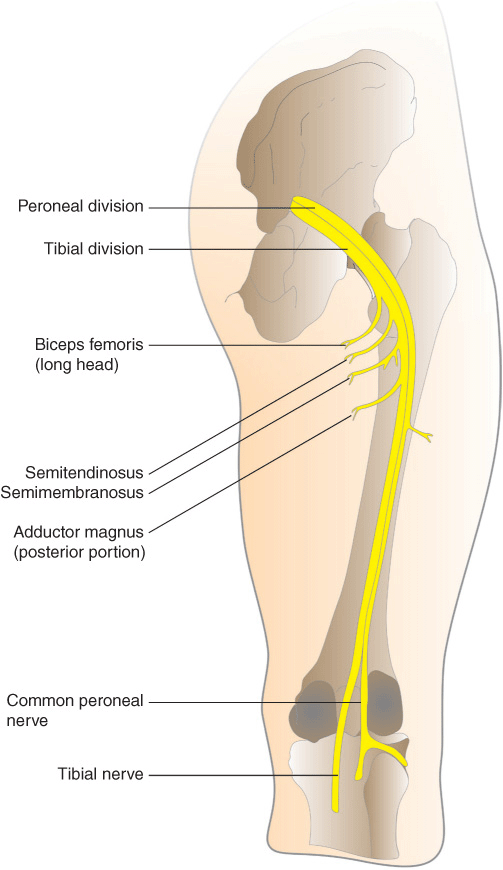
FIGURE 19.1-2. The course and motor innervation of the sciatic nerve.
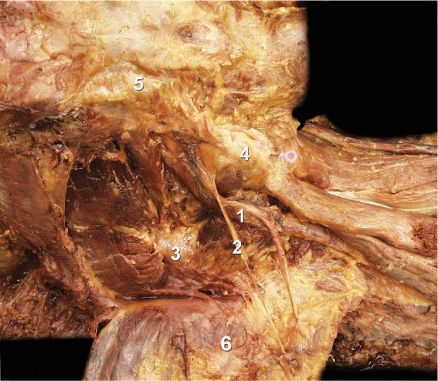
FIGURE 19.1-3. Anatomy of the sciatic nerve at the subgluteal location. ![]() sciatic nerve.
sciatic nerve. ![]() nerve branch to the gluteus muscle.
nerve branch to the gluteus muscle. ![]() ischial bone.
ischial bone. ![]() greater trochanter.
greater trochanter. ![]() posterior superior iliac spine.
posterior superior iliac spine. ![]() gluteus muscle.
gluteus muscle.
Distribution of Blockade
A sciatic nerve block results in anesthesia of the skin of the posterior aspect of the thigh, hamstring, and biceps femoris muscles; part of the hip and knee joint; and the entire leg below the knee with the exception of the skin of the medial aspect of the lower leg (Figure 19.1-4). Depending on the level of surgery, the addition of a saphenous or femoral nerve block may be required to provide coverage for this area.
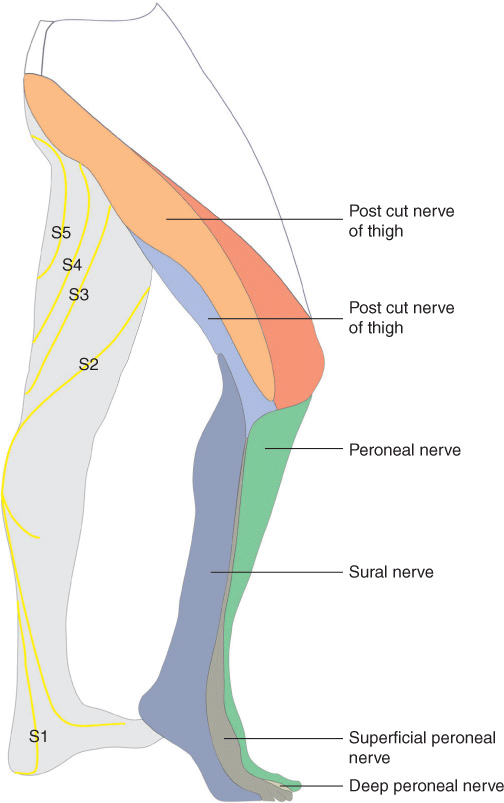
FIGURE 19.1-4. Sensory innervation of sciatic nerve and its terminal branches.
Single-Injection Sciatic Nerve Block
Equipment
A standard regional anesthesia tray is prepared with the following equipment:
• Sterile towels and gauze packs
• One 20-mL syringe containing local anesthetic
• A 3- to 5-mL syringe plus 25-gauge needle with local anesthetic for skin infiltration
• A 10-cm, 21-22 gauge short-bevel insulated stimulating needle
• Peripheral nerve stimulator
• Sterile gloves; marking pen
Landmarks and Patient Positioning
The patient is in the lateral decubitus position tilted slightly forward (Figure 19.1-5). The foot on the side to be blocked should be positioned over the dependent leg so that elicited motor response of the foot or toes can be easily observed.

FIGURE 19.1-5. The patient is positioned in a lateral oblique position with the dependent leg extended and the leg to be blocked flexed in the knee.
Landmarks for the posterior approach to a sciatic blockade are easily identified in most patients. A proper palpation technique is important to adhere to because the adipose tissue over the gluteal area can obscure these bony prominences. The landmarks are outlined with a marking pen:
1. Greater trochanter (Figure 19.1-6)
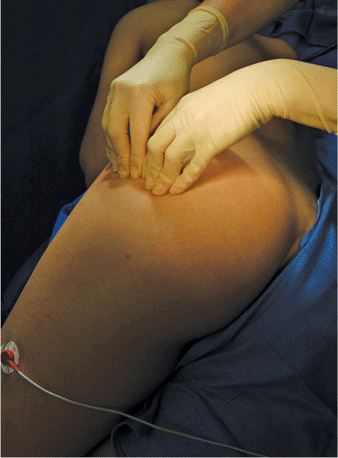
FIGURE 19.1-6. Palpation technique for the greater trochanter.
2. Posterior superior iliac spine (PSIS) (Figure 19.1-7)
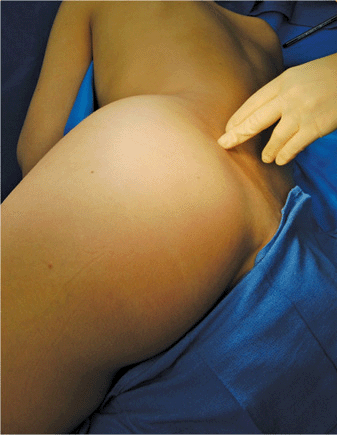
FIGURE 19.1-7. Palpation technique for posterior superior iliac spine.
3. Needle insertion point 4 cm distal to the midpoint between landmarks 1 and 2 (Figure 19.1-8)
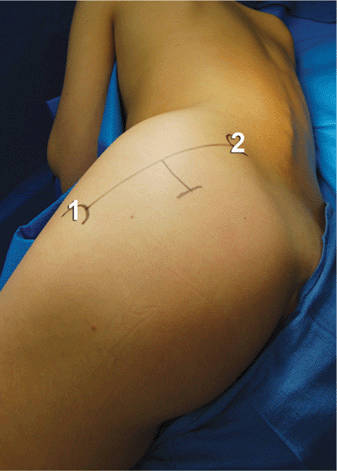
FIGURE 19.1-8. The needle insertion site is marked 5 cm posterior on the line passing through the midpoint between the greater trochanter 1 and the posterior superior iliac spine 2.
A line between the greater trochanter and the PSIS is drawn and divided in half. Another line passing through the midpoint of this line and perpendicular to it is extended 4 cm caudal and marked as the needle insertion point.
Technique
After skin disinfection, local anesthetic is infiltrated subcutaneously at the needle insertion site. The operator should assume an ergonomic position to allow precise needle maneuvering and monitoring of the responses to nerve stimulation.
The fingers of the palpating hand should be firmly pressed on the gluteus area to decrease the skin to nerve distance. Also, the skin between the index and middle fingers should be stretched to allow greater precision during block placement (Figure 19.1-9). The palpating hand should not be moved during the entire procedure. Even small movements of the palpating hand can change the position of the needle insertion site because of the highly movable skin and soft tissues in the gluteal region. The needle is introduced perpendicular to the spherical skin plane. Initially, the nerve stimulator should be set to deliver a current intensity of 1.5 mA to allow for the detection of both twitches of the gluteal muscles as the needle passes through tissue layers and stimulation of the sciatic nerve.
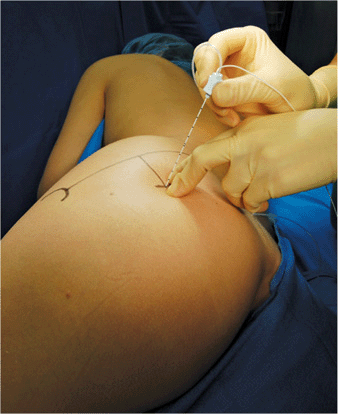
FIGURE 19.1-9. Needle insertion for the transgluteal (posterior) approach to sciatic nerve block.
As the needle is advanced, twitches of the gluteal muscles are observed first. These twitches merely indicate the needle position is still too shallow. Once the gluteal twitches disappear, brisk response of the sciatic nerve ensues (hamstring, calf, foot, or toe twitches). After an initial stimulation of the sciatic nerve is obtained, the stimulating current is gradually decreased until twitches are still seen or felt at 0.2 to 0.5 mA. Typically, this occurs at a depth of 5 to 8 cm. At this low current intensity, any observed motor response is from the stimulation of the sciatic nerve, rather than direct muscle stimulation (false twitch). After negative aspiration for blood, 15 to 20 mL of local anesthetic is injected slowly. Any resistance to the injection of local anesthetic should prompt cessation of the injection and withdrawal of the needle by 1 mm before reattempting to inject. Persistent resistance to injection should prompt complete needle withdrawal and flushing to ensure the patency of the needle before reattempting the procedure.
Troubleshooting
Table 19.1-1 lists some common responses to nerve stimulation and the course of action to take to obtain the proper response.
TABLE 19.1-1 Some Common Responses to Nerve Stimulation and Course of Action for Proper Response
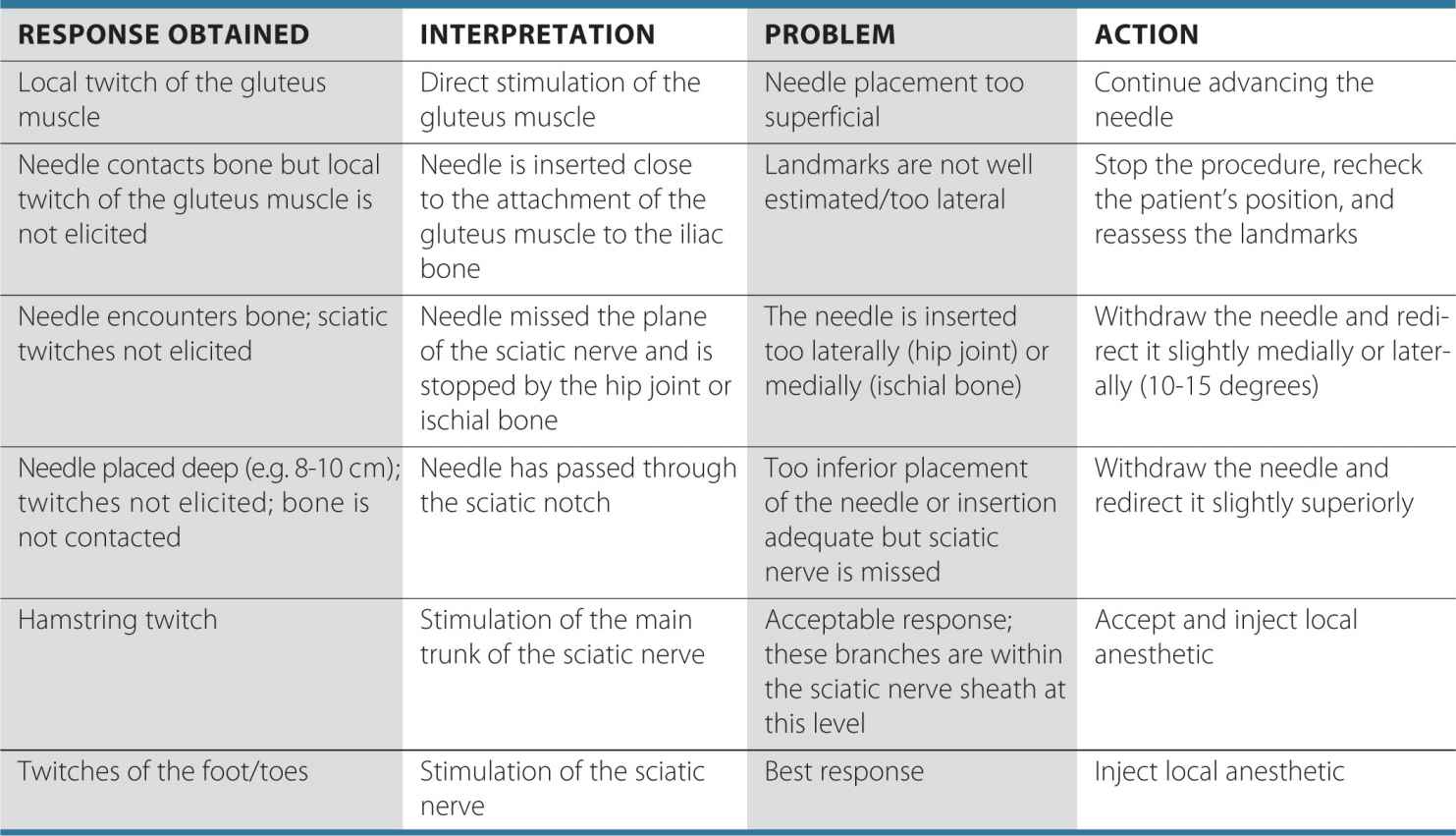
Block Dynamics and Perioperative Management
This technique may be associated with patient discomfort because the needle passes through the gluteus muscles. Adequate sedation and analgesia are important to ensure the patient is still and tranquil. Typically, we use midazolam 2 to 4 mg after the patient is positioned and alfentanil 500 to 750 μg just before the needle is inserted. A typical onset time for this block is 10 to 25 minutes, depending on the type, concentration, and volume of local anesthetic used. The first signs of onset of the blockade are usually a report by the patient that the foot “feels different” or an inability to wiggle the toes.
Continuous Sciatic Nerve Block
Adequate experience with the single-injection technique is necessary to ensure efficacy and safety of the continuous block. The procedure is quite similar to the single-injection procedure; however, a slight angulation of the needle caudally is necessary after obtaining the nerve response to facilitate threading of the catheter. This technique can be used for surgery and postoperative pain management in patients undergoing a wide variety of lower leg, foot, and ankle surgeries. In our practice, perhaps the single most important indication for use of this block is for amputation of the lower extremity.
Equipment
A standard regional anesthesia tray is prepared with the following equipment:
• Sterile towels and gauze packs
• One 20-mL syringe containing local anesthetic
• Sterile gloves, marking pen, and surface electrode
• A 3- to 5-mL syringe plus 25-gauge needle with local anesthetic for skin infiltration
• Peripheral nerve stimulator
• Catheter kit (including an 8- to 10-cm large-gauge stimulating needle and catheter)
Kits come in two varieties based on catheter construction: nonstimulating (conventional) and stimulating catheters. During the placement of a nonstimulating catheter, the needle is advanced first until appropriate twitches are obtained. Then 5 to 10 mL of local anesthetic or other injectate (e.g., D5W) is injected to “open up” a space for the catheter to facilitate its insertion. The catheter is threaded through the needle until approximately 3 to 5 cm is protruding beyond the tip of the needle. The needle is withdrawn, the catheter secured, and the remaining local anesthetic is injected via the catheter. Stimulating catheters are insulated and have a filament or core that transmits current to a bare metal tip. After obtaining twitches via the needle, the catheter is advanced with the nerve stimulator guidance while the motor response of the foot, calf, or toes is maintained. With the catheter technique, motor response of ≤1.0 mA is adequate. If the motor response is lost, the catheter can be withdrawn until it reappears, and the catheter is then readvanced while maintaining the response. This method requires that only nonconducting solution be injected through the needle (e.g., dextrose) prior to catheter advancement.
Landmarks and Patient Positioning
Proper patient positioning at the outset and maintenance of this position during performance of a continuous sciatic nerve blockade is crucial for precise catheter placement.
The patient is placed in the lateral decubitus position similar to the single-injection block. A slightly forward pelvic tilt prevents “sagging” of the soft tissues in the gluteal area and significantly facilitates block placement.
The landmarks for a continuous sciatic block are the same as those in the single-injection technique (Figure 19.1-8):
1. Greater trochanter
2. Posterior superior iliac spine
3. Needle insertion site 4 cm caudal to the midpoint of the line between landmarks 1 and 2
Technique
The continuous sciatic block technique is similar to the single-injection technique. With the patient in the lateral decubitus position and tilted slightly forward, the landmarks are identified and marked with the pen. After a thorough cleaning of the area with an antiseptic solution, the skin at the needle insertion site is infiltrated with local anesthetic. The palpating hand is positioned and fixed around the site of needle insertion to shorten the skin to nerve distance.
A 10-cm continuous block needle is connected to the nerve stimulator and inserted perpendicularly to the skin (Figure 19.1-10). The initial intensity of the stimulating current should be 1.0 to 1.5 mA.
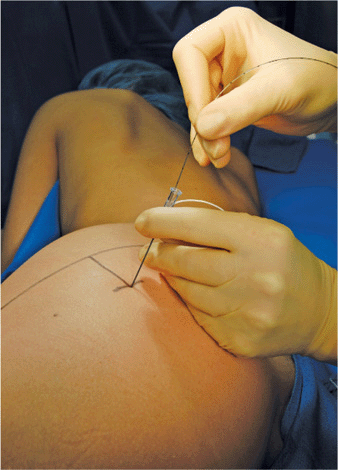
FIGURE 19.1-10. Insertion of the catheter for continuous sciatic nerve block.
Stay updated, free articles. Join our Telegram channel

Full access? Get Clinical Tree








